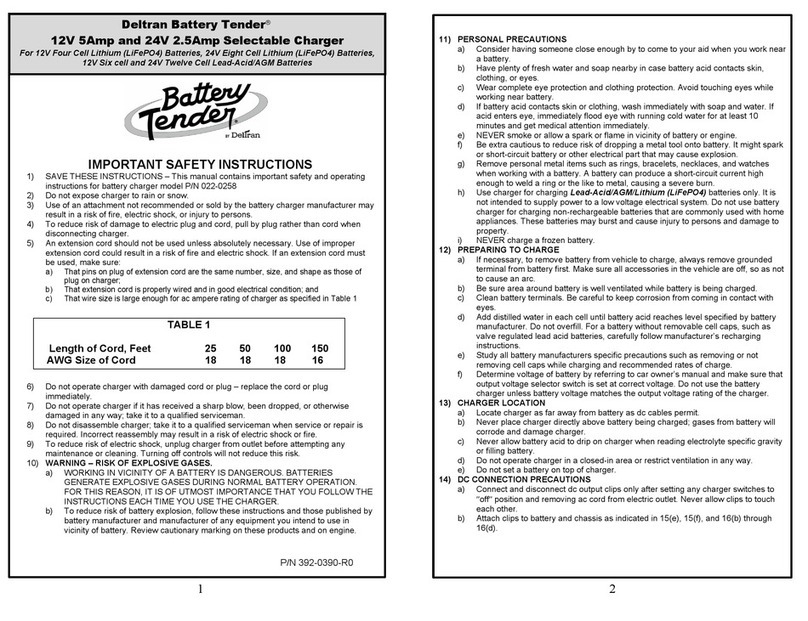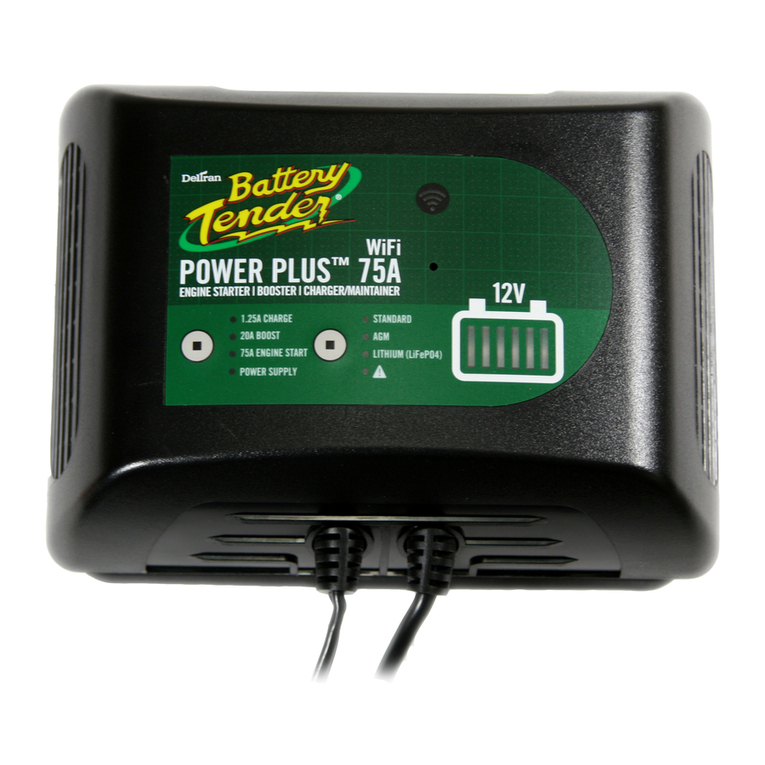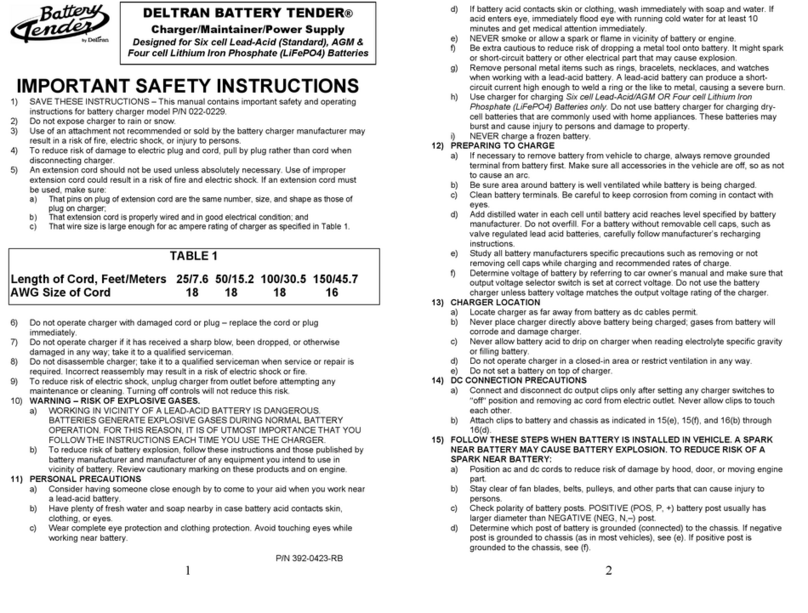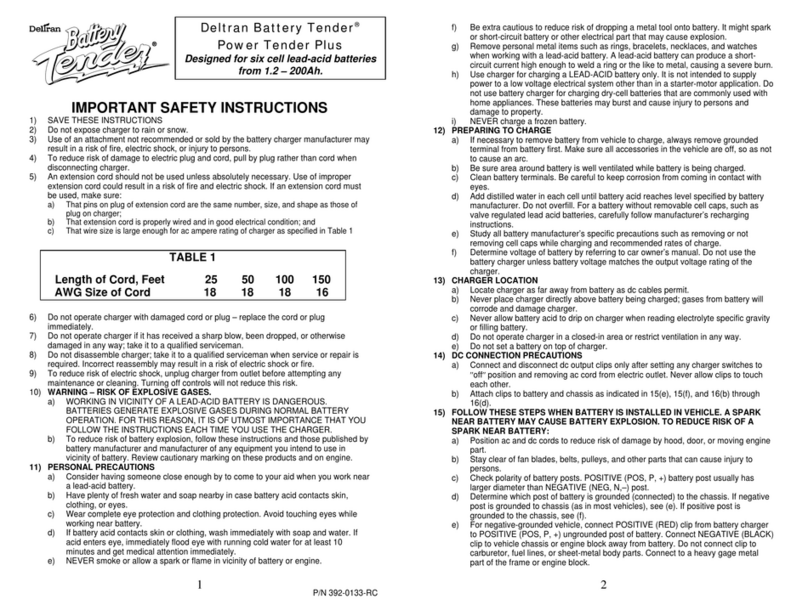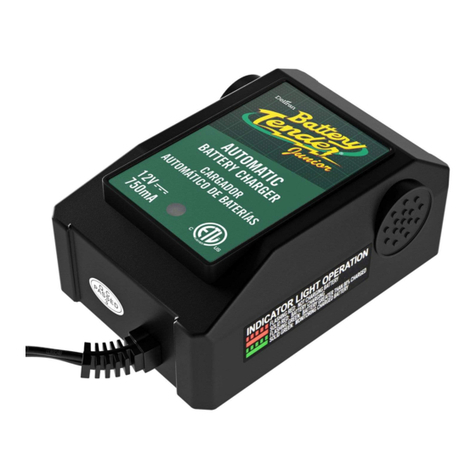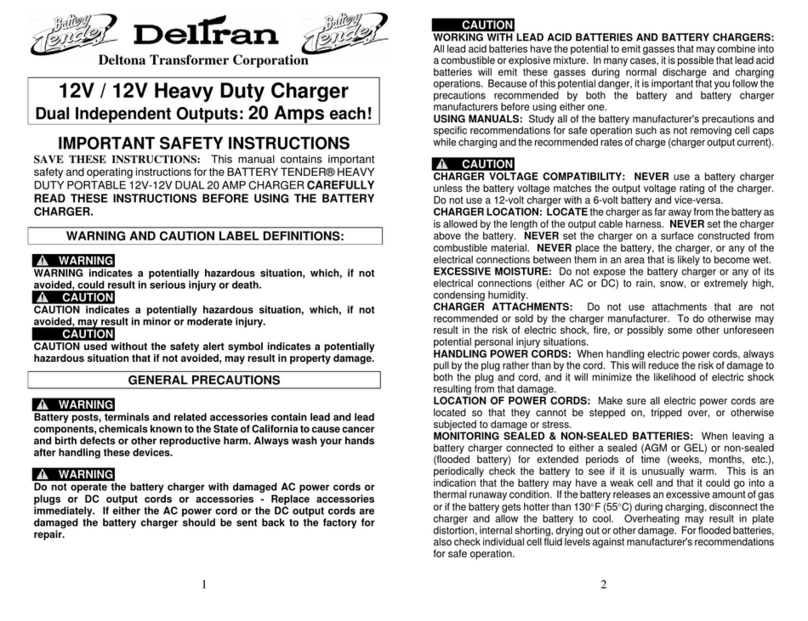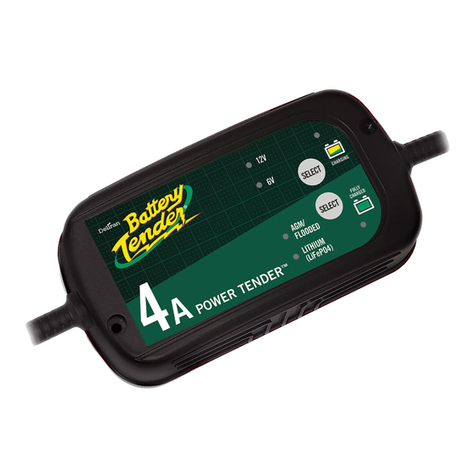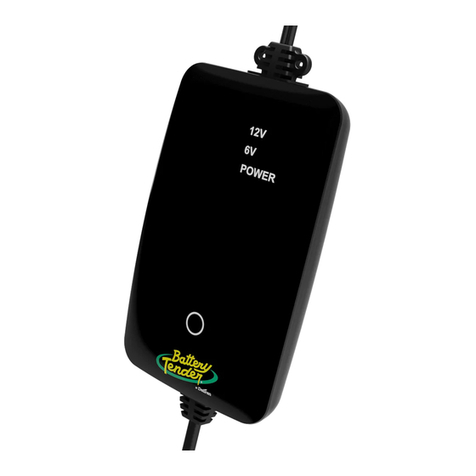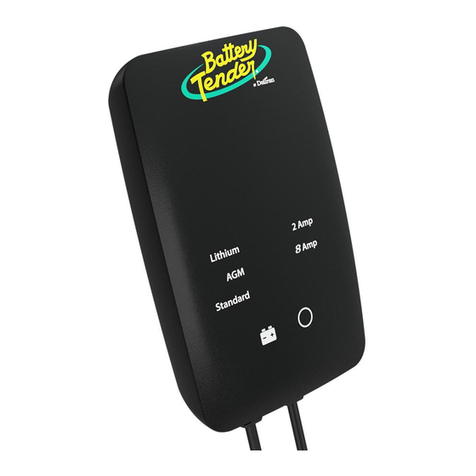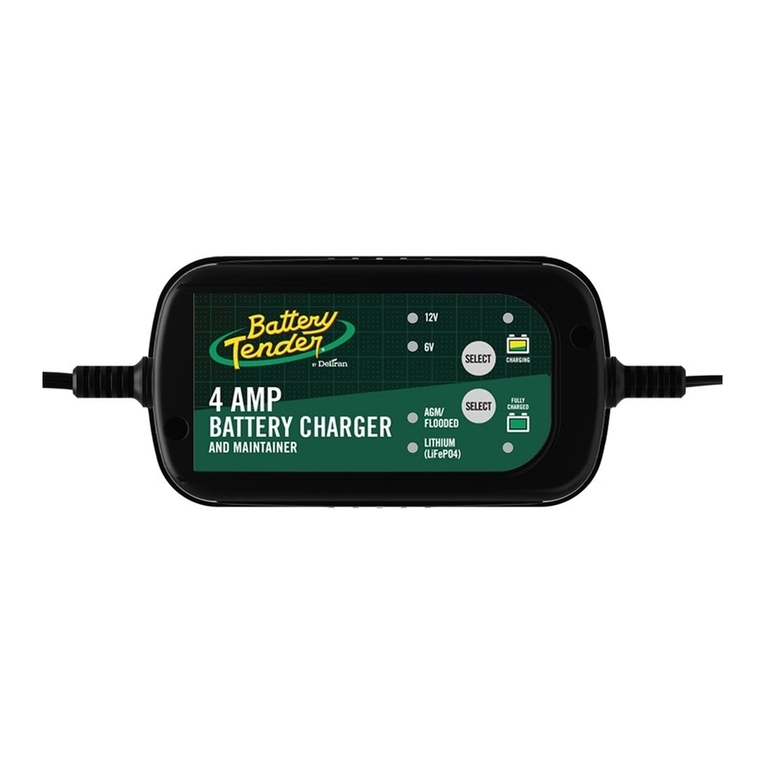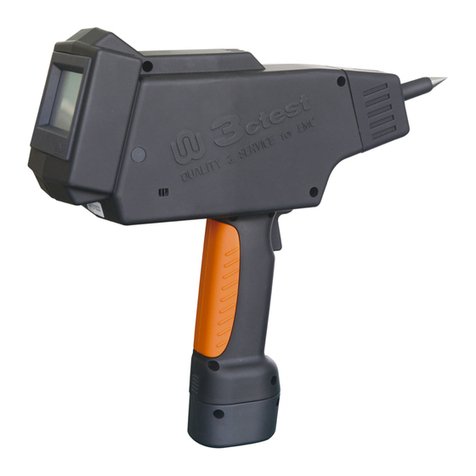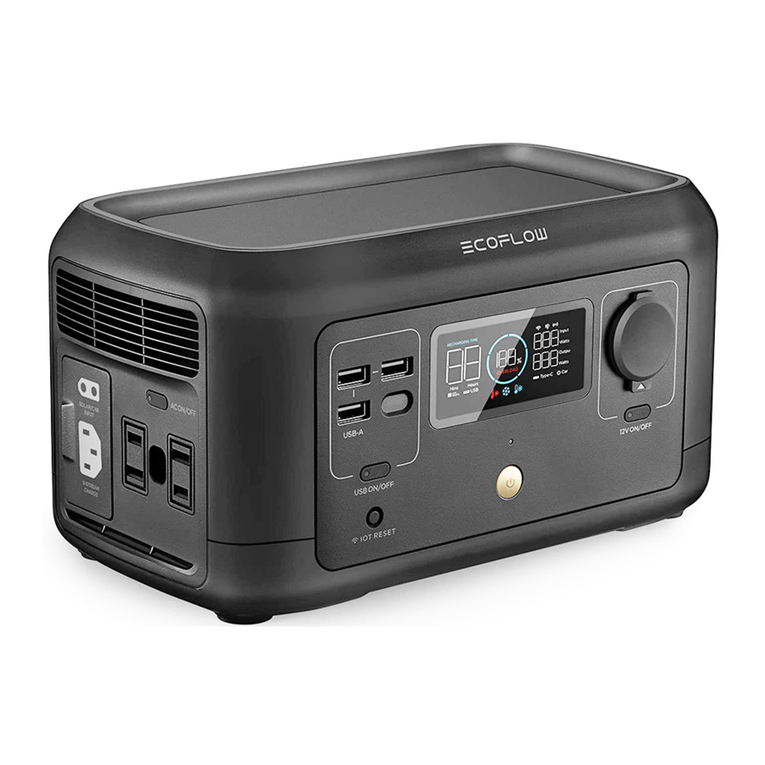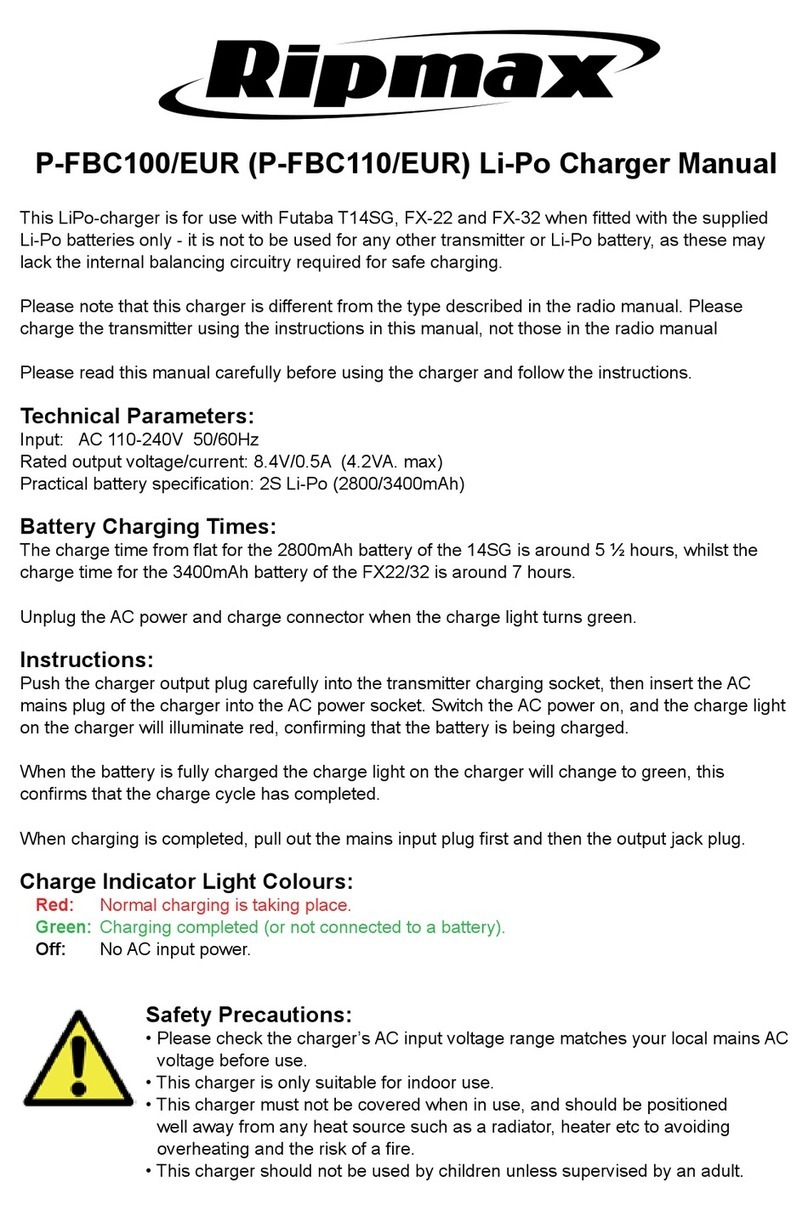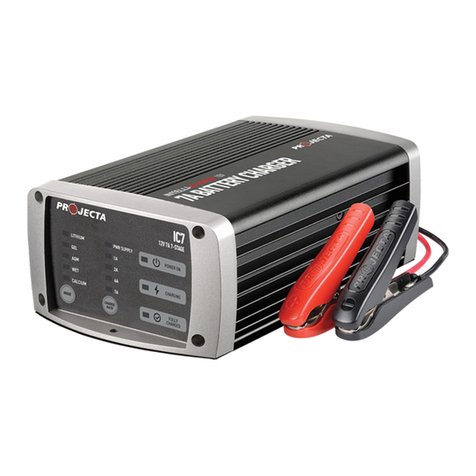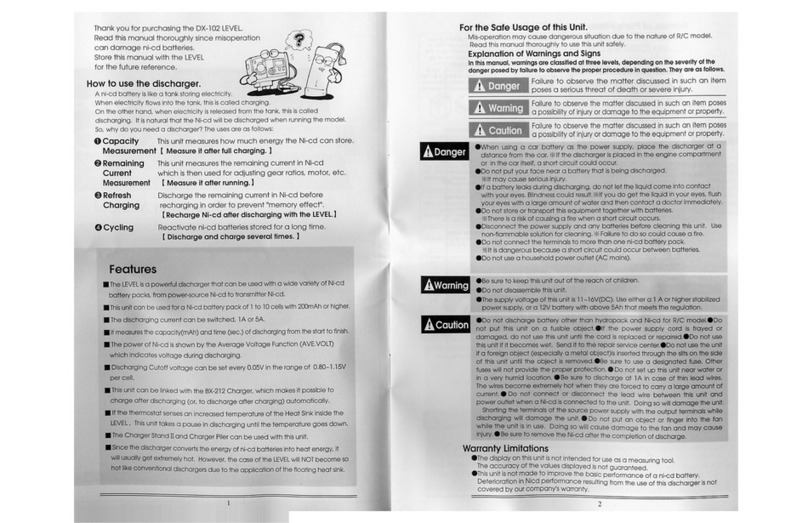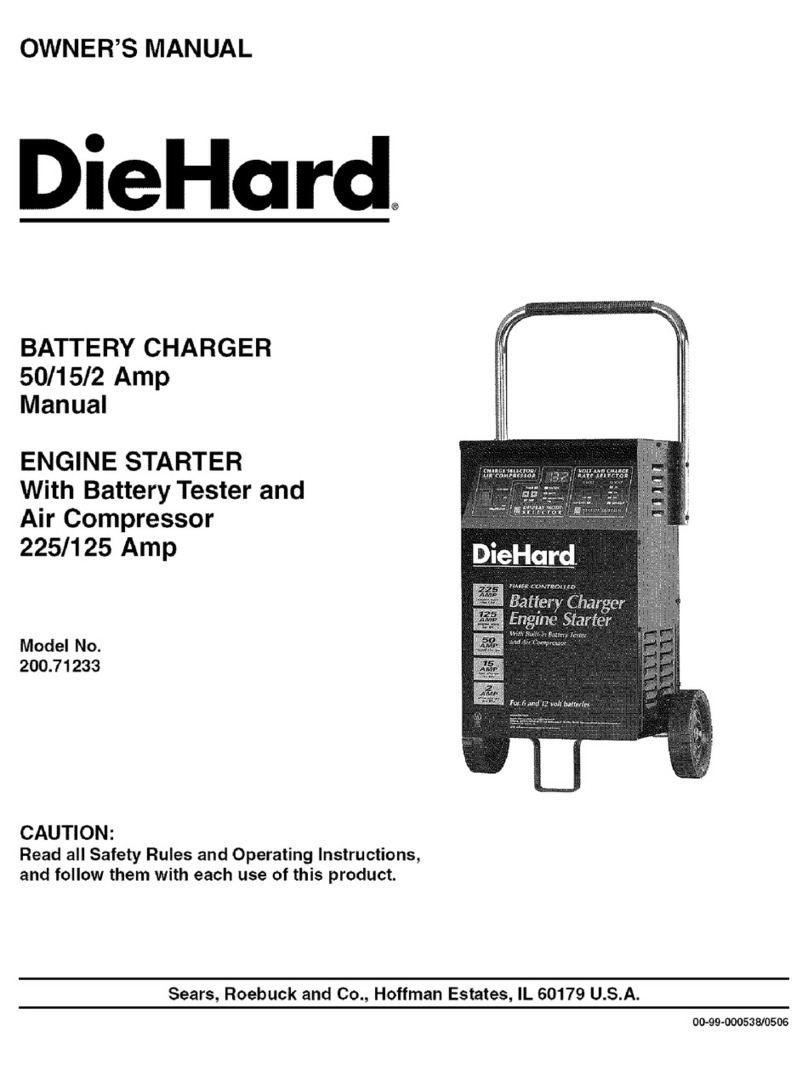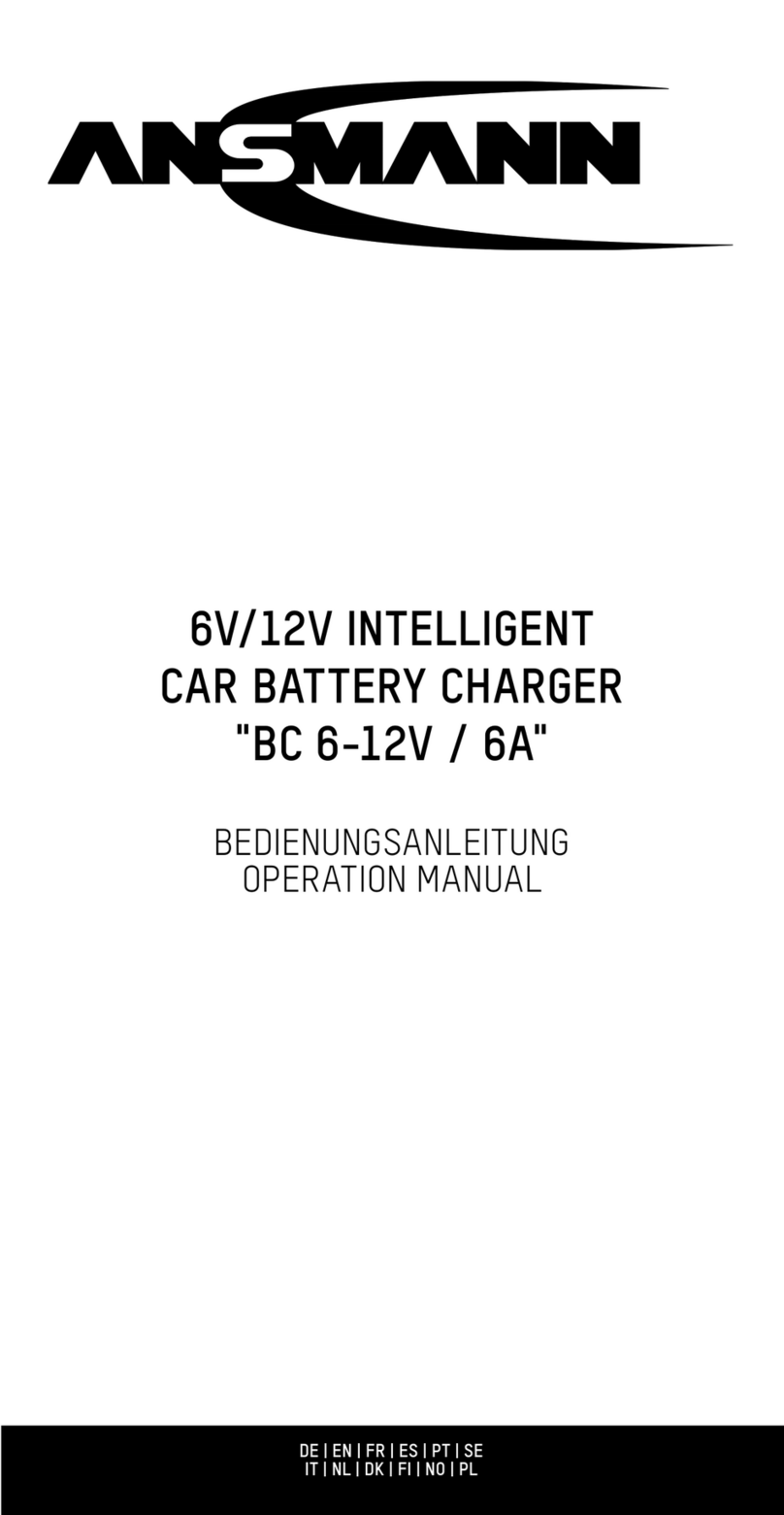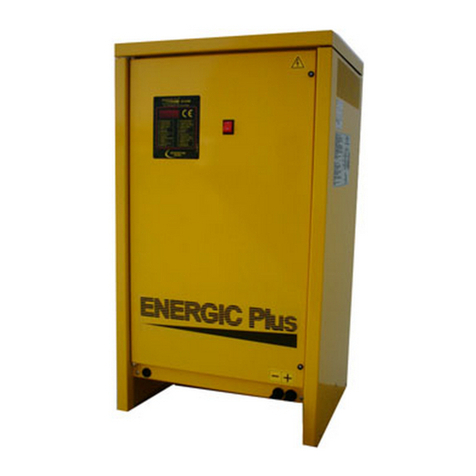
5
WARNING
ELECTRIC SPARK & OPEN FLAME: NEVER smoke or allow a source of
electric spark or open flame in the vicinity of the battery or engine. (For example:
Don't charge the battery next to a gas water heater.)
VENTILATION: Do not operate the charger where ventilation is restricted. The
intent here is to allow sufficient airflow to minimize and dissipate the heat
generated by the charger and to diffuse the gasses that may be emitted by the
battery.
CHARGER MAINTENANCE: NEVER DISASSEMBLE OR ATTEMPT TO DO
INTERNAL REPAIRS. THIS VOIDS THE WARRANTY. Assembling the
charger incorrectly may result in the risk of electric shock or create a fire hazard.
PERSONAL PRECAUTIONS
WARNING
WHEN YOU WORK NEAR LEAD-ACID BATTERIES:
1. Someone should be within range of your voice or close enough to come to
your aid if you have an accident;
2. Have plenty of fresh water and soap nearby in case battery acid contacts skin,
clothing, or eyes;
3. Wear complete eye protection and protective clothing. Avoid touching your
eyes while working near a battery. If battery acid contacts your skin or
clothing, wash immediately with soap and water. If acid enters an eye,
immediately flood the eye with running cold water for at least 10 minutes and
get medical attention as soon as possible;
4. Be extra cautious when handling metal tools around a battery. If you drop a
metal tool near a battery it might spark or create a short circuit between the
battery terminals and some other metal part. Either event may cause a
dangerous electrical shock hazard, a fire, or even an explosion;
5. Remove all personal metal items such as rings, bracelets, necklaces, and
watches when working with a lead-acid battery. A lead-acid battery can
produce a short-circuited current high enough to weld a metal ring or other
piece of jewelry, causing a severe burn;
6
6. Use Battery Tender® Solar Chargers for charging 12V lead-acid or 12V
Lithium Ion batteries only. They are not intended to supply power to an
extra low-voltage electrical system or to charge dry-cell batteries. Charging
dry-cell batteries may cause them to burst and cause injury to persons and
damage to property;
INFORMATION NOTE ABOUT DRY-CELL BATTERIES:
There are some wet, non spillable, lead acid batteries on the market whose
manufacturers' make the claim that they are dry-cell batteries. These batteries
are sealed, gas-recombinant, starved electrolyte, possibly with AGM (Absorbed
Glass Mat) type construction. It is perfectly safe to use the Battery Tender®
Solar Charger to charge these types of batteries. The dry-cell battery warning is
intended for rechargeable or non-rechargeable alkaline and other similar types of
batteries. If you have any doubt about the type of battery that you have, please
contact the battery manufacturer before attempting to charge the battery.
7. NEVER charge a visibly damaged or frozen battery.
WARNING
IF THE BATTERY MUST BE REMOVED FROM THE VEHICLE:
1. To avoid an electric arc (or spark), turn off or disconnect all of the accessories
in the vehicle. Then always remove the cable that is connected to grounded
terminal from battery first;
2. If necessary, clean the battery terminals. Be careful to keep the corrosion and
other debris from coming in contact with your eyes;
3. If the battery is not a sealed battery, then if necessary, add distilled water to
each cell until the battery acid solution reaches the level specified by battery
manufacturer. Do not overfill;
4. Before connecting the charger to the solar panel, check the polarity of the
battery posts, and attach at least a 24 inch long 6 (AWG) insulated, battery
extension cable to the negative battery post. Then connect the appropriate
charger DC output connectors to the battery and the extension cable, positive
to positive and negative to negative. Never allow the alligator clips or terminal
rings to touch each other after they are connected to the battery charger.









